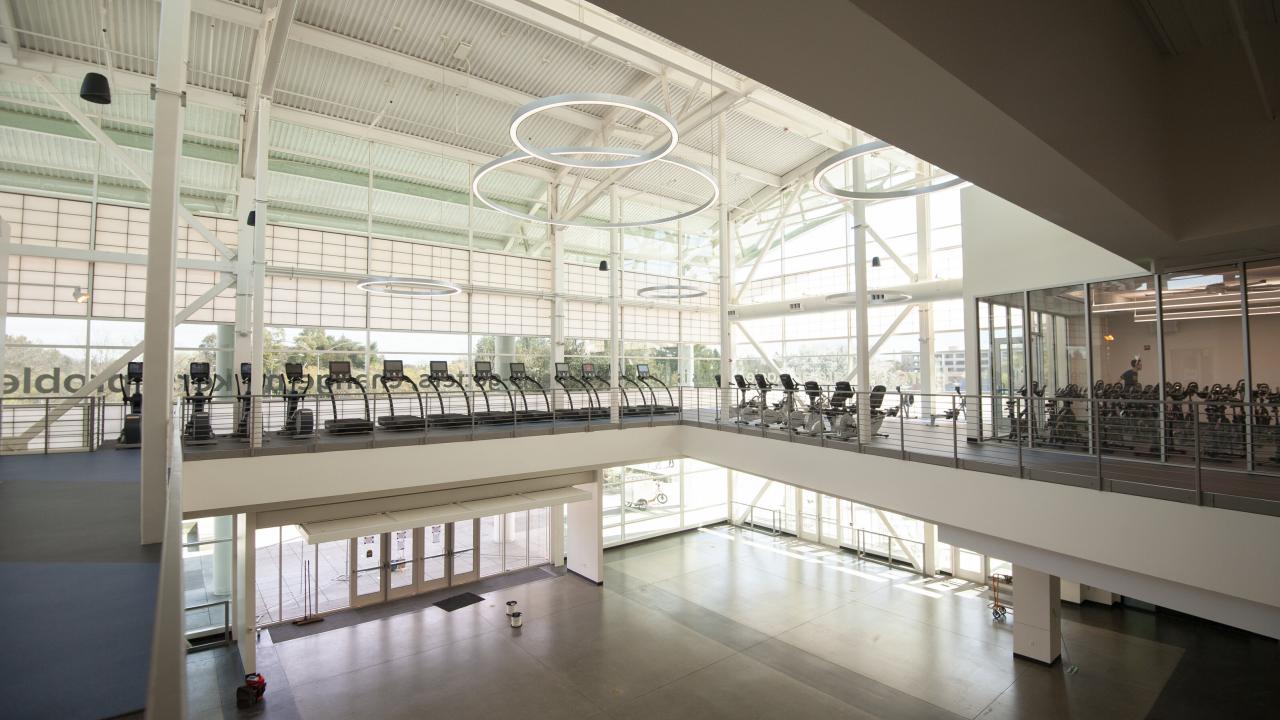
Building Sustainably
For the past three years, University of California Davis has been ranked the most sustainable university in the country by GreenMetric World University Rankings. The university’s sustainable efforts span the entirety of its operations, including Design and Construction Management. DCM plays an important role in building and maintaining a sustainable university with every project it undertakes.
LEED rankings
The University of California is committed to designing and constructing sustainable buildings systemwide, requiring every new building or major renovation meets a minimum silver Leadership in Energy and Environmental Design (LEED) certification or equivalent. UC Davis regularly goes above and beyond that requirement.
“Of the past twenty-eight new construction projects managed by DCM, nine ranked platinum and seventeen were gold,” Julianne Nola, Director of Major Capital Projects, said. “When it comes to sustainability, we’re not interested in meeting the minimum. We want to excel wherever possible.”
Early in every project, DCM performs an eco-charrette to discuss the sustainability goals and strategies for the project. These intensive meetings include architects, engineers, and client representatives.
“We host these sustainability-focused planning sessions to identify where we could take measures to make the project sustainable and appoint leaders to make sure we meet those goals,” Nola said.
However, achieving these high-level certifications takes more than a plan—it takes a “campus commitment,” according to Nola. LEED standards are holistic. They evaluate site sustainability, water efficiency, energy and atmosphere, materials and resources, and indoor environmental quality.
“The UC Sustainable Practices Policy goals, together with green building standards like LEED, help drive UC Davis and our private sector design and construction partners forward in sustainability leadership,” Camille Kirk, director of sustainability and campus sustainability planner, said. “And, we work together to seek creative solutions for today and the future, since we build for the long-term as a university.”
“Reaching Gold level is only possible through the collaboration and cooperation of different departments across campus,” Nola said. “When we choose sustainable light and plumbing fixtures, we seek input and support from Facilities Management since they will be maintaining them. We partner with Transportation Services coordinating sustainable transportation, such as vehicle charging spots in the parking lot, and Arboretum and Public Garden for sustainable irrigation systems. It’s always a team effort.”
“With so much construction on campus, Campus Planning and Environmental Stewardship appreciates the collaboration with DCM,” director of campus planning, Lucas Griffith said. “Each project represents a great opportunity for the University to incrementally improve the campus landscape in general and meaningfully contribute towards our shared sustainability goals.”
UC Davis actively works on creating a campus culture of sustainability, which has facilitated this cooperation. “Across our campus, we have active and engaged students, faculty and staff who want to see UC Davis steward our resources to ensure a resilient and healthy future,” Kirk said.
The most recent project to get certified was the renovation and expansion of the Activities and Recreation Center, earning LEED Gold certification in March 2020. When planning the renovation of such a heavily trafficked building, DCM considered not only sustainable measures like energy efficiency and recycled materials but also healthy air quality and maximizing daylight inside and views outside for people in the building.
“Our patrons enjoy the daylight harvesting lights in the lobby and the natural lighting throughout the facility. It has created a very inviting atmosphere and adds to the overall user experience.” Deb Johnson, director of Campus Recreation, said. “The buzz on campus from our students is electric and it is so rewarding to have a facility of this caliber at UC Davis supporting student wellness.”
Big Shift
UC Davis is taking a major step toward carbon neutrality this spring with the Big Shift, a large-scale construction project set to break ground in May. The Big Shift is a collaboration between DCM, Campus Planning and Environmental Stewardship and Facilities Management representing a fundamental change in the way campus is heated—a shift leading away from a fossil fuel-reliant, steamed-based heating infrastructure to a more sustainable and efficient hot water-based system.
Steam vs. hot water

Big Shift Overiew
Check out this video on the Big Shift made by two electrical engineering interns.
“In the current system, water is heated using natural gas at two heating and cooling plants on campus,” said Kurt Wengler, associate director of engineering at DCM. “The steam created from this process then travels through underground pipes to buildings across campus and is used to heat them.”
After 75 years, the infrastructure for this system is deteriorating. This has provided the university an opportunity to transition to a more sustainable method of heating the campus.
“There are a number of factors that make a steam-based system less desirable. It is aged inefficient, and it relies on natural gas, a non-renewable resource,” Wengler said.
“Across campus, deteriorating insulation on underground steam pipes carrying 350 F, results in significant energy loss. In fact, over 30 percent of heat generated in this system is currently lost in transit to buildings. The campus shift to a low temperature hot water system will address these issues,” said Ardie Dehghani, campus engineer at DCM.
“Ultimately, the hot water-based system will use electricity generated through renewable power to heat the water,” Dehghani said.
Messy but worth it
Making this sustainable shift in heating will require disruptive construction in central parts of campus.
“This project will involve a lot of digging. For the first portion of the shift, we will be laying almost 4 miles of underground supply and return piping down Hutchison Drive and throughout the Quad District,” said Jim Carroll, associate vice chancellor and university architect at DCM.
Laying the new underground pipes will require large trenches to be dug within and alongside roads. After the pipe is laid, buildings will be connected to the new system. By Fall 2021, 31 buildings will be converted to the new hot-water based system.
“We know the construction will be inconvenient, but we’ve been meeting with departments across campus to ensure our campus constituent’s needs are met,” Alan Suleiman, DCM Project Manager said. “We’ve met with representatives from buildings being switched over and with entities whose services span campus, like Conference and Event Services and the Disability Issues Administrative Advisory Committee.”
As construction begins this Spring, DCM will continue to work with Campus departments, Transportation Services, the Fire and Police Departments to ensure the safety of folks traveling on bicycle or foot. Detour and closure information will be posted in advance on the website. The majority of construction activity will take place behind 6’ chain link fences to protect faculty, staff, students and visitors. Construction signs will be placed to direct the public away from construction equipment and activities. Aggie Hosts will support the team’s efforts as project ambassadors near construction sites, assisting students with appropriate detour paths and sharing the sustainability message this project portends.
Find more information—including an overview video, an estimated schedule of construction, and an FAQ page—on the Big Shift website.